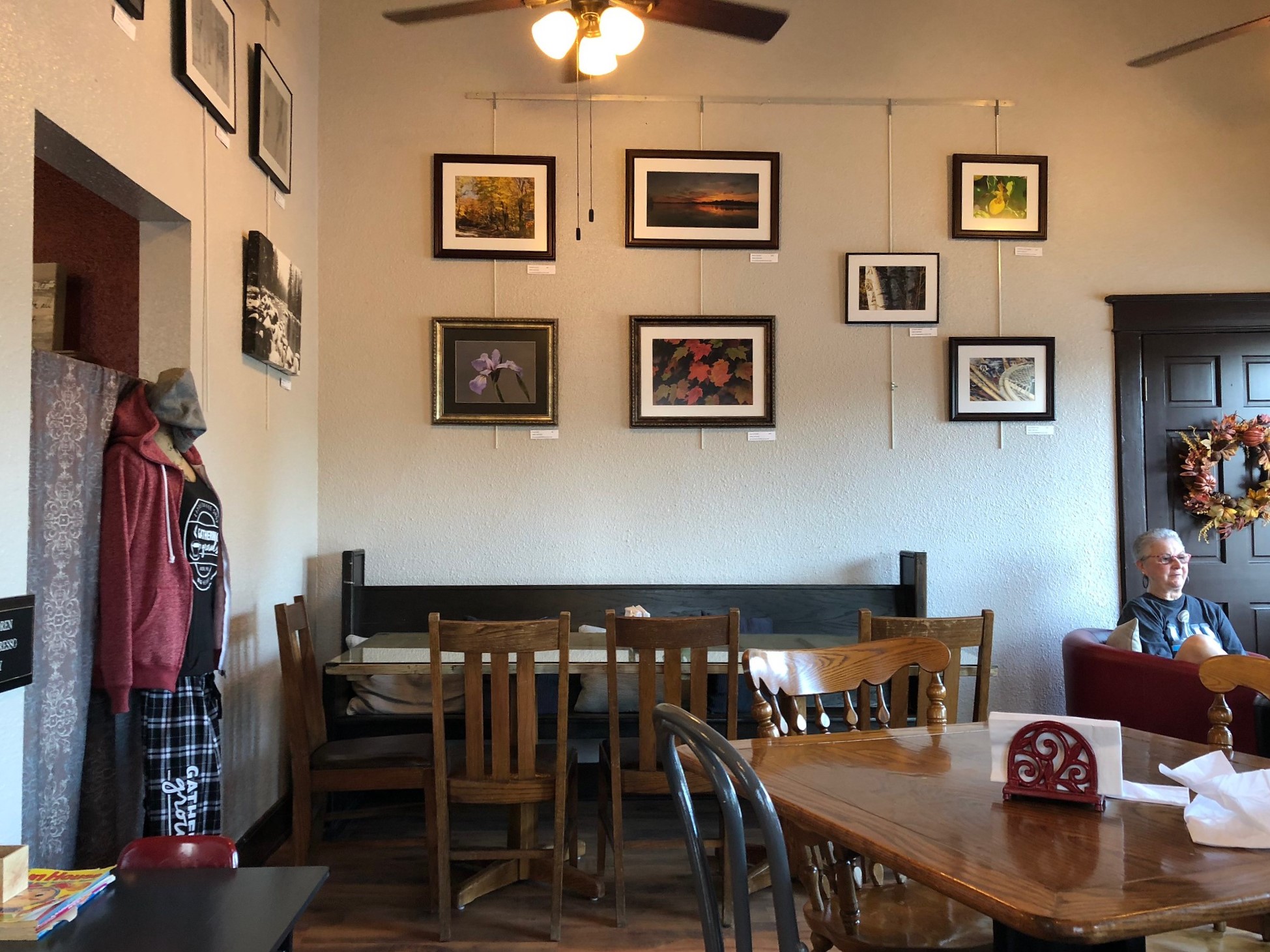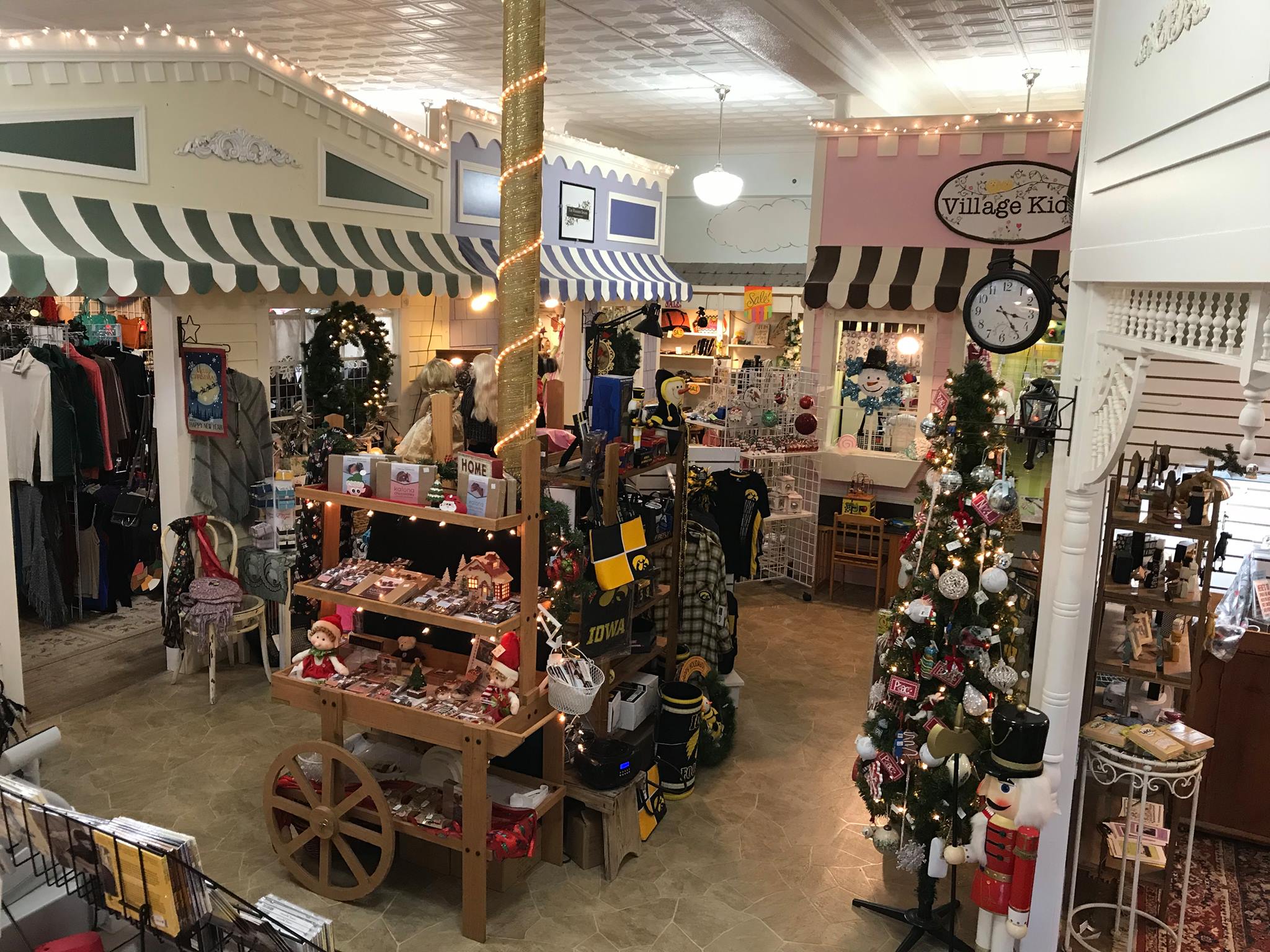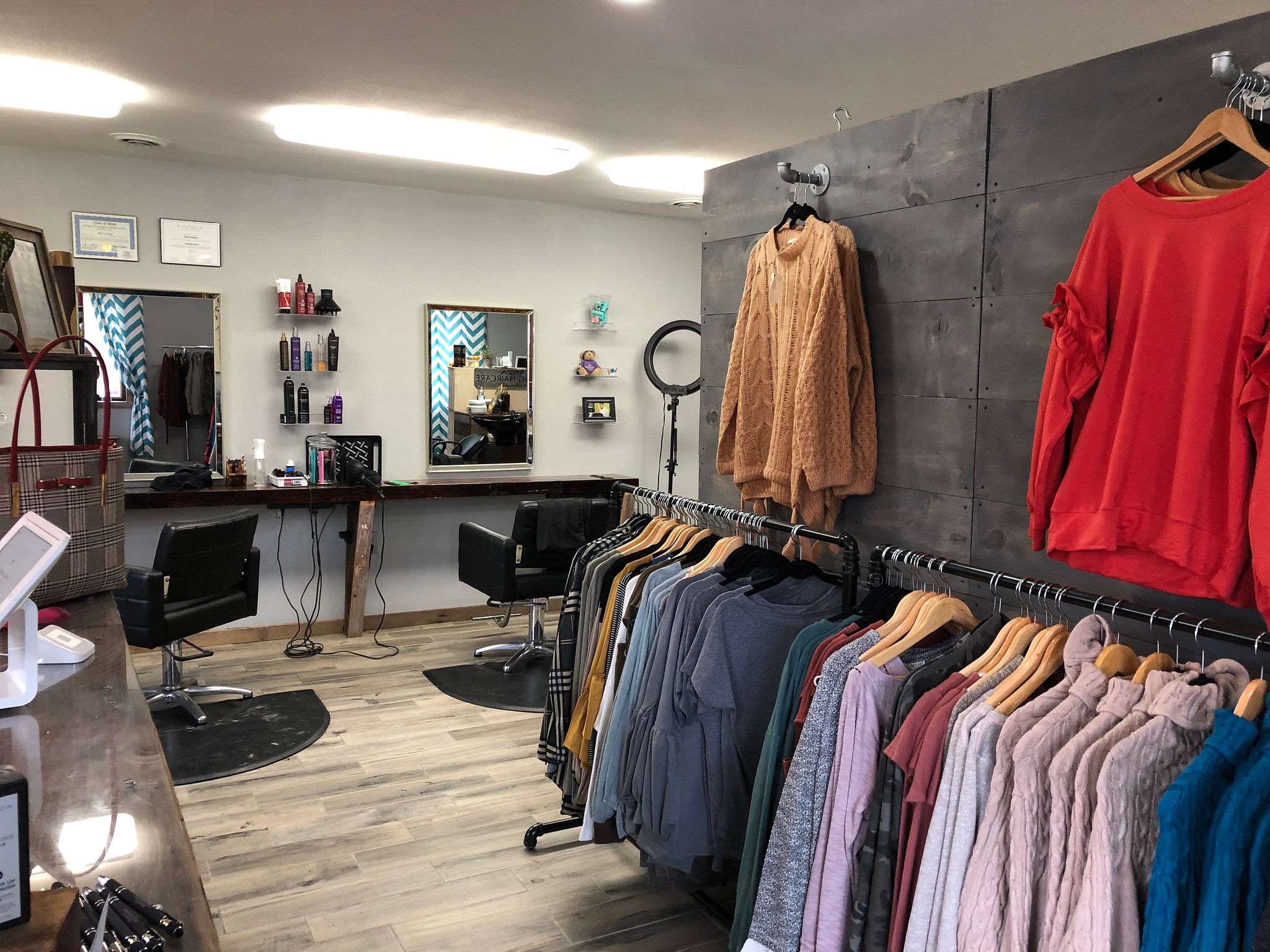May 29, 2019 | Main Spotlight | Need More Retail in Your District? Share Space to Spur Startups | By Becky McCray
It’s common to see local art in coffee shops, like Common Grounds in Avon, Minnesota. Why not extend this idea to all the businesses in your Main Street district? Photo by Deb Brown
Need more retail activity in your Main Street? Shared spaces offer a quick solution to the most common barriers: not enough usable buildings, not enough going on, not enough vacancies or not enough potential retailers. Need more retail activity in your Main Street? Shared spaces offer a quick solution to the most common barriers: not enough usable buildings, not enough going on, not enough vacancies or not enough potential retailers.
Shared spaces come in many forms including multiple retailers splitting a building, a store setting aside a few dozen square feet for a micro-store or pop-up, or even a service business featuring local artists on their walls. Once you start looking for space to share, you’ll find it everywhere.
Divided Retail Buildings
Dividing large buildings to house multiple small retailers in small spaces is an ongoing retail trend.
The Village, in Washington, Iowa,* started as a huge old department store building that sat empty for years. Because the population is 7,200, not many big retailers would be interested in renovating all 15,000 square feet of retail space. A group of locals worked together to divide it up into individual storefronts facing the inside of the building resulting in the appearance of a tiny village. Each storefront is only a few hundred square feet, so tiny retail businesses can easily fill them. Inside the miniature village square in the center of the building, they set up push carts and card tables to give even smaller retail opportunities for even tinier startups. People can start a business just on one table, then move up to a pushcart, then step up to fill a tiny storefront, then graduate to a space of their own in the downtown.
“I truly believe that this is the future of retail in small communities,” owner Cathy Lloyd said.
In addition to paying rent, each mini-store operator agrees to work a certain number of hours helping customers at all the shops in The Village. Other shared spaces use more of a shopping mall model, where each mini store is staffed independently. Some spaces run as a cooperative, sharing responsibilities. 
Large retail spaces can be subdivided into multiple smaller stores. One of the cutest is The Village in Washington, Iowa, where a former department store now looks like an actual village with little shops and table-top merchants. Photo by June Henderson
Business Inside a Business
Think how many businesses aren’t using all the space they have available. Maybe there’s a professional firm with an extra office, or an insurance company with a lot of empty space in the front room. Imagine new tiny businesses popping up inside of them.
Almost any business can participate in Art on the Walls, an idea from Goffstown, New Hampshire.* Once a quarter, they install local art on the walls inside local businesses. That’s it! Instant added foot traffic for the business, exposure for the artist and a celebration of local art. You could boost the idea by holding a big event and tour when new art goes on display.
If you want to see a business-inside-a-business example, walk into a local hair salon. The long history of stylists renting booths from the salon operator makes these hotbeds of entrepreneurial activity. You’ll probably see displays of scarves, accessories, candles and all manner of locally made products. These are pop-up businesses inside another business. Increasingly, salons are taking this idea further, with full-fledged businesses sharing their space. Salon Meraki in Webster City, Iowa,* includes a clothing store called Funky Zebras. 
Beauty salons have long been hotbeds of entrepreneurial activity. The new trend is for salons to share space with full-sized retail businesses. Meraki Studio in Webster City, Iowa, includes a clothing store called Funky Zebras. Photo by Deb Brown
Shared Arts Spaces
Shared arts spaces can combine both retail and studio space for several artists working together. The ARTesian Gallery, in Sulphur, Oklahoma, is a project of the Chickasaw Nation. It includes tiny individual studios for artists to work in. There’s a gallery space for exhibits, classroom space for training and shared equipment that all the artists can use. Mark Mulligan with the Chickasaw Nation said he sees the ARTesian Gallery as a collaborative co-working space for artists with artists meeting each other, trying new things and sharing ideas.
Combination Spaces: More Than Retail
Beth Reynolds from Ashland, Massachusetts, created a shared space that combines retail with food and community called The Corner Spot.
Beth explained, “It is a pop-up park with a pop-up business incubator that serves as a brick and mortar store for any business wanting to pop up during the spring, summer and fall months. (We do winter events there too). It also serves as a community gathering place for food trucks, music and a beer garden. Young people love a place to gather, listen to music, eat food and socialize. My little spot has proved all of that.”
Especially for smaller towns, combination spaces make sense. You need more than one line of income to make it economically feasible.
Benefits of Sharing Space
Towns benefit by making the most of the limited usable retail space. It doesn’t matter if the limit is on the number of retail spaces being made available, the condition of downtown buildings, or the number of potential retail entrepreneurs. Sharing spaces helps.
Shared spaces establish more retail businesses by cutting down the barriers to entry. You don’t need as much to get started, so more potential retailers will be able to start small and experiment. The businesses sharing space benefit from building community and creating a mini ecosystem.
The Front Porch Market, in Donalsonville, Georgia, includes 15 different vendors selling boutique clothing, antiques, jewelry, handmade goat’s milk soap and garden accessories in a mini-mall type space. To cut down the barriers to entry even further, the Downtown Development Authority holds classes for vendors and set up a small revolving loan fund to support the tiny businesses. 
The simplest form of space sharing in retail is to divide a building. In Aberdeen, South Dakota, a women’s clothing store hosts a coffee bar in a side room, while downstairs has essential oil sales and yoga studio. Photo by Becky McCray
A study from Emergent Research found that co-working spaces are much more than just a place to work. “They are places where members work, network, learn and socialize together.” In this study, people who use co-working spaces said they were:
• Learning new skills
• Improving their professional success
• Feeling happier and less lonely in their work
You can imagine how those positive results apply not just to co-working, but also to shared retail space where entrepreneurs work together.
*Main Street America communities
About the author:
Becky McCray is a small town business owner and a cattle rancher. She co-founded SaveYour.Town to share her positive view of rural places and people. You might recognize her from her "Future of Retail" article in the State of Main 2018 issue. She shares insights from her real world experience at her highly-ranked website, SmallBizSurvival.com and in her award-winning book, Small Town Rules. She makes her home base in Hopeton, Oklahoma, a community of 30 people. Her goal is to deliver practical steps you can put into action right away to shape the future of your town.